A huge fire in Constantinople burned so fiercely that the lead sheets on the top of Hagia Sophia melted, it was said, and poured like rain. Fervent prayers to St Sampson preceded a deluge of real rain that put out the fire and saved the hospital. Think of the staff and patients alike shouting in prayer, nurses helping cripples to kneel, others lying muttering, flat on their backs clutching crucifixes, flickering light on the medical treatises rolled in the pigeonholes, doctors frozen with their instruments, eyes squeezed shut or white all the way around in terror, the air charged, the tension pulled to the snapping point, and the final, overwhelming crash of thunder, the release of rain, the screams of relief and joy, of renewed faith.
I sat on a hillside covered with wild mustard, drawing Byzantine bricks through chestnut trees just coming into bloom, and the whole world was yellow and green. A sunny day in April, and I was drawing in dead quiet: a 6th-century Byzantine site between a church of the same vintage and a wall, shown above, from somewhat later. The mustard rioted all over the hill and flooded down into the ruin, celebratory bursts of yellow against the dark pitted bricks. Nothing indicated that just over the wall hordes of camera-swinging tourists clogged the street. We love tourists here in Istanbul, their money and presence preserves antiquities. But I was grateful for the silence and solitude. The last public hordes to be in the ruin were a thousand years ago, and I could feel those years.
A breeze came up, fresh with approaching storm. As I drew, an image came clear in my mind’s eye, an image of a foot. A woman’s foot in a pointed slipper: beaded pink fabric on top, leather on the bottom, a ribbon around the ankle. It stood on pale marble, near a marble fountain with a lion’s head, down in the very courtyard I was drawing, but clear of weeds. I froze. I let the image come. I thought of Theodora, the 6th-century harlot who became the pious and powerful Empress of Justinian.
A small woman with dark hair, in a light dress of powder blue and robes the color of red wine. She walked in the courtyard alone on a sunny day. Did Theodora visit this place? Was she ever alone, or did her attendants stand back in the shadows and let her wander in sunny solitude? Just a pipedream, but it would not let me rest. A mere pipedream of Theodora is as powerful as a banshee, the furious life force projecting down through the centuries. All day and night that pointed toe stood on the marble next to the fountain. For some reason it made me happy.
These mosaics were set by sixth-century fingers right into the dirt. They’re dark green and pale gray-green. Think how many earthquakes, fires and wars they’ve survived! Think of the feet that have walked on these chips of marble, the shoes they wore. Below the dirt is a cistern: here’s a well from outside the cafe up top. A dropped stone produces a deep satisfying sploosh.
So our ruin is the bottom of the structure: the Hospital of Sampson, built by a sainted doctor so adept, it is said, that he healed the Emperor Justinian of a hideous illness with the laying-on of his hand. His reward was the construction of this multistoried structure, a haven for the infirm poor, linking Hagia Sophia and Hagia Eirene. Being built by master architects in the pre-electric 6th century, it was full of sunny courtyards.
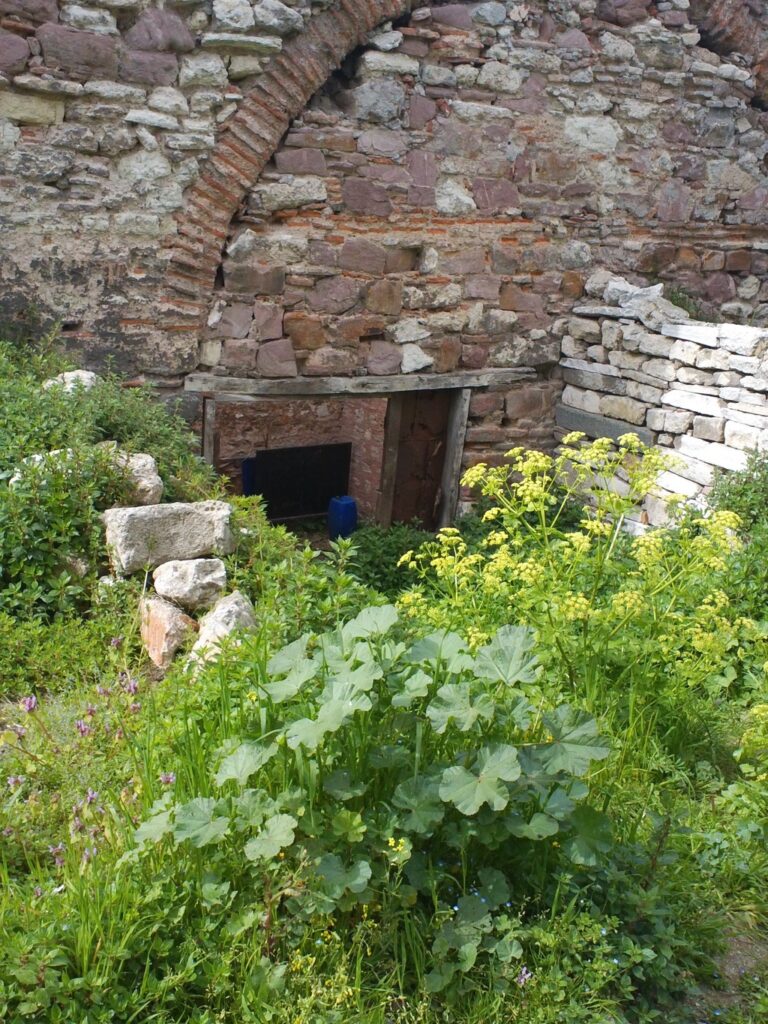
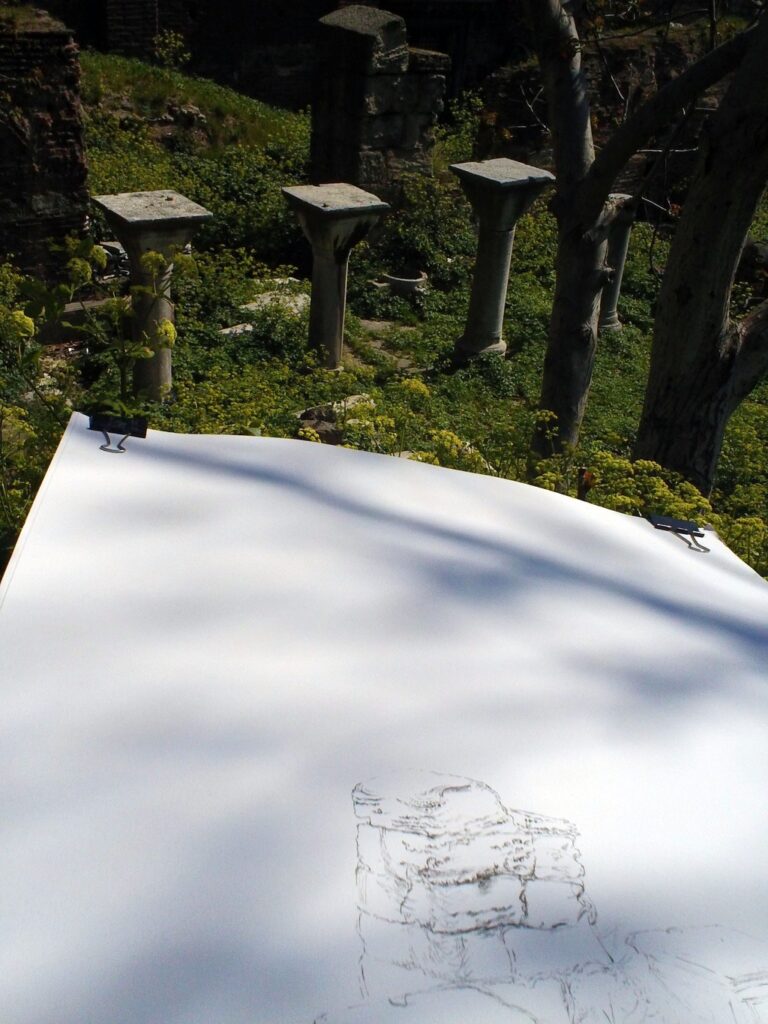
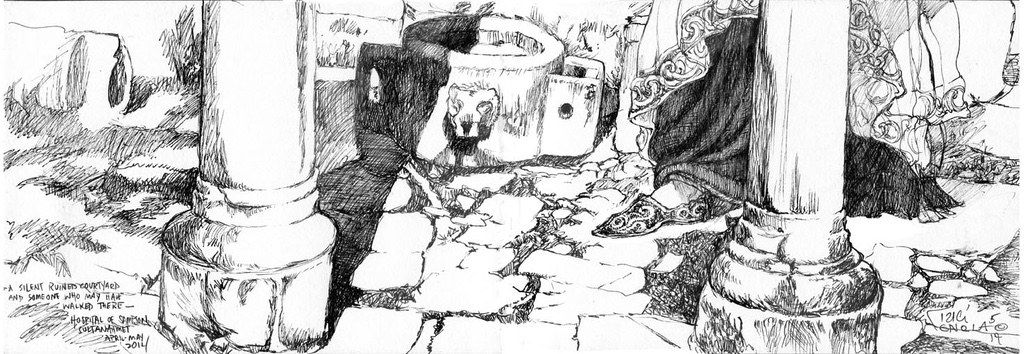
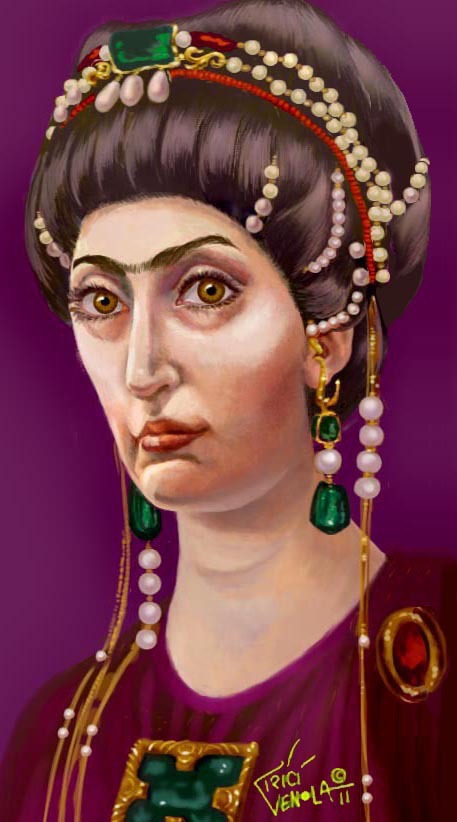
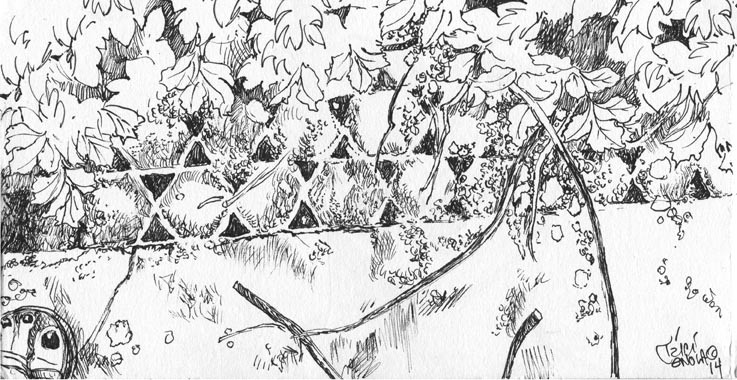
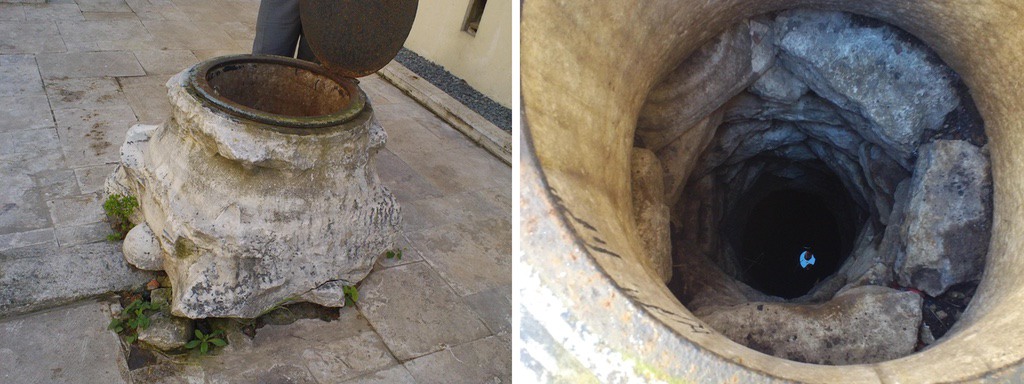
Very enjoyable and emotive of the moody surroundings. Lovely artwork and writing! You did it all! I am a friend of Leslie Foale and she has told me about you. We are both on the Isle of Skye. Best Wishes to you and thank you for such a meaningful and moving post.